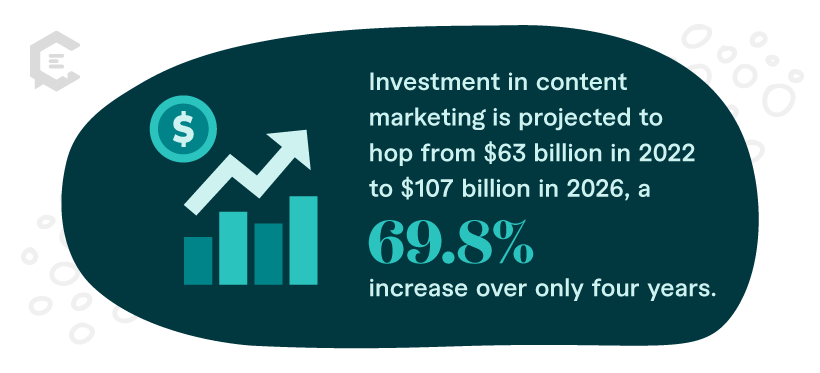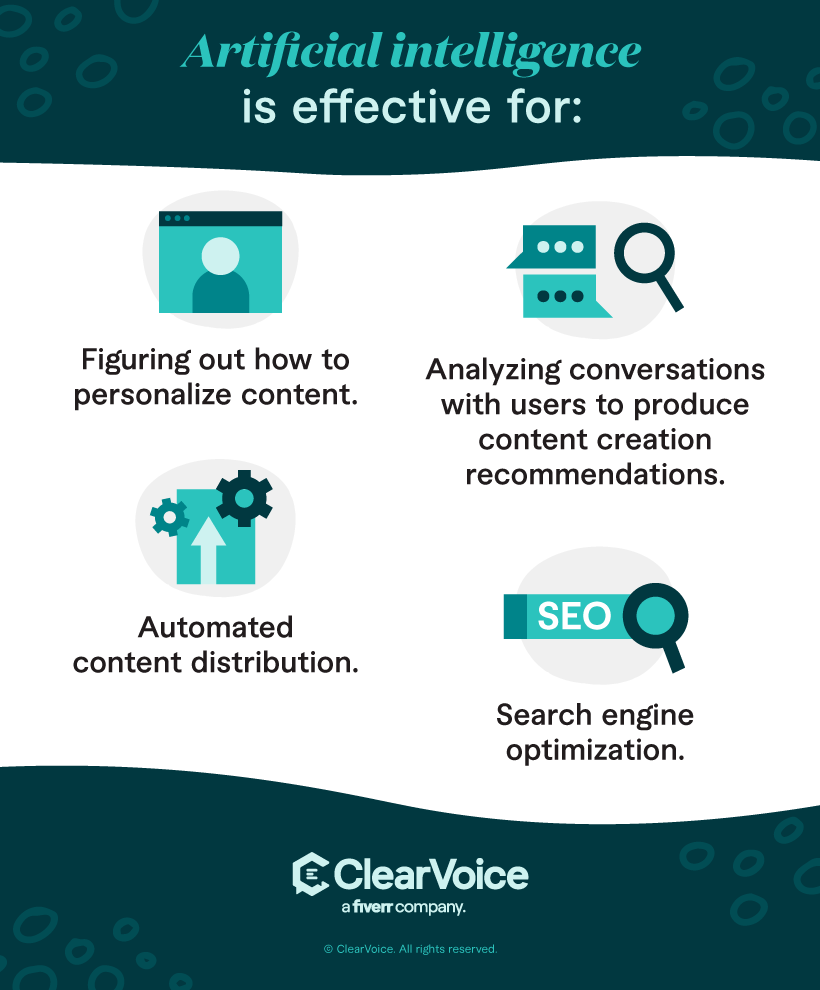Financial and fintech content marketing is unlike that of any other industry. Marketers need to both spark interest and explain complex, intricate solutions. This means financial content marketing has to be both promotional and educational.
Marketers have been rising to this challenge using a mix of ingenuity and personalization. Along this vein, the future is looking good for financial content marketing.
The Top Trends in Financial Content Marketing
Here are some financial content marketing trends coming down the pike to ensure you’re using the most cutting-edge strategies.
1. Data-driven content
Data-driven content marketing involves deciding which content to produce based on data about what customers want and their behaviors.
Specifically, a data-driven financial content strategy takes into account:
- The decisions made by your target audience
- Your target market’s preferences
- Trends in your target market’s buying habits
You then use this data to generate relevant and valuable content for your audience
For example, you can use customer browsing data from your website to gauge which kinds of articles they’re reading most frequently. Let’s say you notice most site visitors click on either blogs offering financial advice or brief articles about recent news events.
You could then craft a marketing campaign featuring those kinds of content to drive customer engagement, increase retention, and improve new client acquisition numbers.
2: Personalized and interactive content
Investment in content marketing is projected to hop from $63 billion in 2022 to $107 billion in 2026, a 69.8% increase over only four years.
But to maximize your investment, you need to personalize your content. Personalized content features material you create based on what customers have done in the past.
For example, suppose a customer has explored articles on your web app about purchasing municipal bonds. You could show them content regarding bonds and other relatively conservative investments, such as certificates of deposit.
Interactive content involves the customer interacting with your content. Sometimes, they may simultaneously allow you to collect data about their preferences.
For instance, you can give customers:
- Quick quizzes featuring questions about their risk appetite.
- Polls with questions about how they envision their retirement. For example, you could ask, “Are you more interested in traveling after retirement or maintaining your current lifestyle?”
- Solutions based on their answers. For instance, if you learn that a significant percentage wants to travel, you could create retirement plans with discretionary income allocated for vacations.
On the other hand, some interactive content is designed to boost engagement — even if it doesn’t provide much helpful data.
For instance, you can provide customers with fun, addictive games that keep them on your site. While they’re there, you can leverage banners or messages that appear on their screens. These could feature products and advisory solutions catered to their needs.
If you’re struggling at all with ideating financial content, check out our top 5 financial content ideas to amplify your strategy this year.
3. Mobile-first strategies
Mobile-first strategies often deliver the most bang for their buck. These approaches focus on creating content that works well on mobile devices like phones and tablets. But mobile-first involves more than making sure content looks good on small screens.
A mobile-optimized content marketing strategy may also feature:
- Pages that aren’t too data-heavy, so they load quicker on mobile devices
- Short videos that appear in the first fold — or top of the screen — on a mobile device
- Infographics — instead of paragraphs — that explain complex financial concepts
- Push notifications that present links to content on subscribers’ devices
But there’s more. A mobile-first strategy also involves analyzing how users interact with your marketing material.
For example, you can track how much time mobile users spend on certain pages. You can then correlate this data with your number of conversions. In this way, you can identify content that wins with mobile users. Then you can replicate it for continued success. You can also use mobile analytics to weed out stagnant, ineffective content.
Mobile-first strategies are especially effective for the financial industry.
Customers frequently research solutions on their mobile devices. They may do so privately, on public transportation, or in preparation for an important meeting. Either way, providing them with relevant content puts your offering top of mind.
4. AI and blockchain
Artificial intelligence (AI) and blockchain can be important in your content strategy. It can automate some of the more laborious tasks associated with creating and distributing marketing collateral.
For example, AI is effective for:
- Figuring out how to personalize content. Instead of combing through content consumption stats for hours on end, you can use AI to automatically surface which content has been performing best and which isn’t getting the job done.
- Analyzing conversations with users to produce content creation recommendations. For instance, you can use AI to analyze the transcripts of customer support sessions or convos with financial analysts. AI can tell you which kinds of content you should produce to address the needs of similar customers.
- Automated content distribution. What content should you feature in your next social media marketing campaign? AI can answer this question by telling you which groups of users are most likely to engage with specific subjects and types of content.
- Search engine optimization. You can use AI to analyze the successful content that your competition is producing. The AI can tell you which keywords and phrases to feature in your articles, how often to break paragraphs and the optimal number of headings to use.
The Future of Financial Content Marketing
The future of content marketing aligns well with the financial industry, which thrives off:
- Clear, straightforward messaging about why solutions are effective
- Direct messaging that targets small user niches
- Explanations of complex concepts in simple words
By using data-driven and personalized content, you can hyper-focus your content. You aim it at those who are most likely to convert to paying customers. With a mobile-first strategy, you ensure your content is effective on smaller devices. And with AI tools, you can fine-tune your content to resonate with your discerning customer base.
Over the next few years, finance content marketing will hinge on leveraging data.
Your website, apps, and customer relationship management (CRM) systems generate a treasure trove of useful data. Using this information to target your content can bolster your relationships with customers.
Reach out to ClearVoice today to hire expert financial industry content producers.







